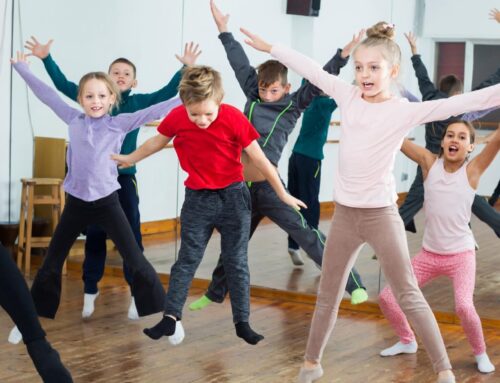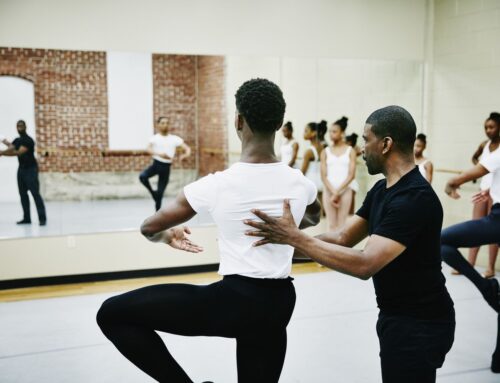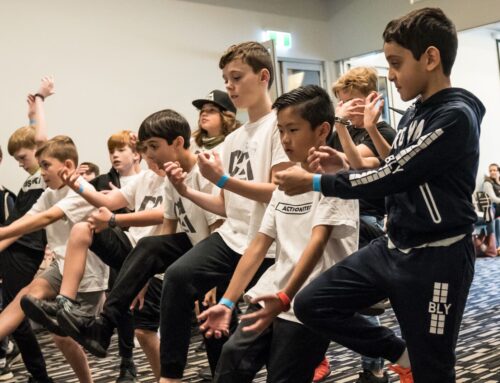Adolescence presents unique challenges as teenagers navigate physical changes, social pressures, and the development of their identity. During this critical period, many young people struggle with self-doubt and low confidence, which can impact their academic performance and social relationships. While dance education often begins early with ballet classes for toddlers, teenagers can also benefit tremendously from movement-based activities that build self-assurance and personal expression. Dance offers a powerful combination of physical activity, a creative outlet, and community connection that addresses many of a teenager’s developmental needs. This guide explores how structured dance training helps teens develop lasting confidence while providing practical strategies for overcoming common obstacles that prevent young people from trying dance.
Benefits of Dance for Teenagers
Regular dance participation provides comprehensive benefits that address both the physical and emotional aspects of teenage development. The cardiovascular workout improves heart health and builds stamina, while strength training inherent in dance movements develops lean muscle mass and bone density during crucial growth years.
The flexibility gained from regular stretching and movement helps prevent injury in other activities while also improving posture and body alignment. Many teenagers spend hours hunched over devices or desks, making the postural benefits of dance particularly valuable for counteracting these modern lifestyle challenges.
Coordination and balance improvements transfer to other sports and activities, making dancers more capable athletes overall. The complex movement patterns required in dance simultaneously challenge the brain and body, creating neural pathways that support learning in other areas.
Social connections formed in dance classes provide peer support during a time when friendships become increasingly important. The shared experience of learning challenging skills and performing together creates bonds that often last beyond the dance studio years.
Creative expression through movement gives teenagers a healthy outlet for emotions that might otherwise be suppressed or expressed destructively. Dance offers a constructive way to process emotions and express experiences that are difficult to articulate.
Boosting Self-Confidence Through Movement
Physical accomplishment builds genuine self-confidence as teenagers master increasingly complex dance techniques. Unlike confidence based on external validation, movement-based confidence comes from internal awareness of personal capability and growth.
Body awareness improves as dancers learn to control and coordinate their movements precisely. This increased connection between mind and body helps teenagers feel more comfortable and confident in their physical presence during social interactions.
Performance opportunities teach teens to manage nervousness and present themselves effectively in front of others. These experiences build public speaking confidence and reduce anxiety about being the center of attention in academic or social situations.
Goal achievement through dance training demonstrates that consistent effort leads to measurable improvement. Teenagers learn to set realistic objectives, work systematically toward them, and celebrate progress along the way.
Risk-taking in a safe environment allows teens to experiment with movement and expression without serious consequences. This practice of taking on appropriate risks builds confidence for tackling challenges in other areas of life.
Overcoming Insecurities on the Dance Floor
Self-consciousness about appearance or ability affects most beginning dancers, regardless of age. Recognizing that these feelings are universal helps normalize the experience and reduce the shame that often accompanies insecurity.
Starting with beginner-appropriate classes prevents overwhelming experiences that could reinforce negative self-perceptions. Proper class placement allows students to build skills gradually while experiencing regular success and encouragement.
Focusing on personal progress rather than comparing oneself to others helps maintain motivation and positive self-regard. Dance instructors can help students track their improvement and celebrate personal milestones.
Supportive class environments, where students encourage one another, create safe spaces for vulnerability and growth. When classmates celebrate each other’s efforts rather than competing, everyone benefits from increased confidence and a more positive atmosphere.
Regular practice builds familiarity with movements and reduces anxiety about making mistakes. As technical skills improve, students naturally feel more comfortable expressing themselves through dance.
Building Self-Esteem Through Dance Styles
Different dance genres appeal to various personality types and interests, enabling teenagers to discover styles that resonate with their unique preferences. Hip-hop appeals to students drawn to urban culture and high-energy movement, while contemporary dance attracts those interested in emotional expression and storytelling.
Ballet provides a strong technical foundation and discipline that builds systematic thinking skills alongside physical capabilities. Jazz dance combines technical training with an upbeat energy that appeals to outgoing personalities and those with a passion for musical theater.
Latin dances, such as salsa or tango, introduce cultural elements while building confidence through partner work and social interaction. These styles often feel less intimidating than solo performance genres while still providing significant technical challenges.
Experimenting with multiple styles prevents boredom while helping students discover their natural strengths and preferences. Some dancers excel at sharp, rhythmic movements, while others shine in flowing, expressive styles.
Cross-training in different genres builds well-rounded skills and prevents overuse injuries common when focusing exclusively on one movement pattern. Versatility also opens more performance and competition opportunities.
Encouraging Positive Body Image Through Dance
Dance training helps teenagers develop an appreciation for their bodies’ capabilities rather than focusing solely on appearance. When students focus on executing movements correctly, they learn to prioritize strength, flexibility, and coordination over superficial qualities.
Diverse body types succeed in dance, demonstrating that there is no single “perfect” dancer physique. Students see classmates of various shapes and sizes excelling in different aspects of training, broadening their definition of physical capability.
Emphasizing functional fitness in dance promotes health-focused rather than appearance-focused relationships with physical activity. Students learn to fuel their bodies properly for optimal performance rather than restricting their food intake for weight control.
Costume and performance experiences can be designed to celebrate rather than critique bodies. When dance programs emphasize artistic expression over physical perfection, students develop healthier relationships with their appearance.
Movement meditation aspects of dance help students connect with their internal experiences rather than external judgments. This mindfulness practice transfers to daily life, promoting self-acceptance and reducing anxiety about appearance.
Related Topics:
- Embracing Dance for Boys: Breaking Misconceptions and Celebrating Benefits
- Ballet Classes for Teens: Why It’s Never Too Late to Start




